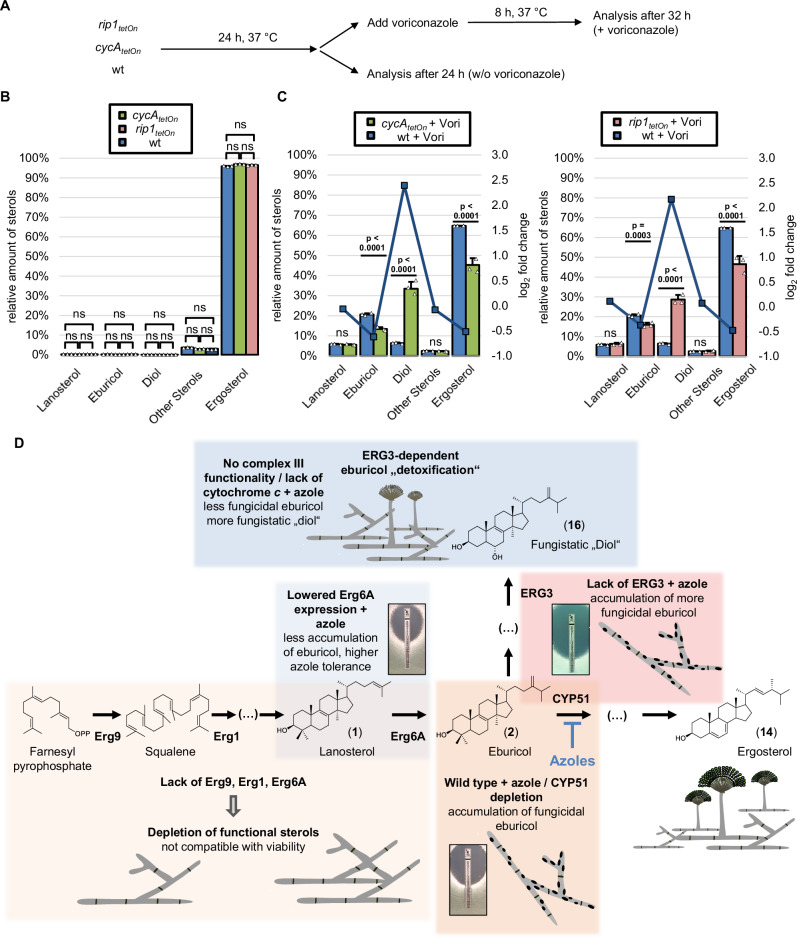Fig. 7. Increased formation of 14-methylergosta-8,24(28)-dien-3β,6α-diol in cytochrome c-depleted hyphae and model of the antifungal activity of azoles against A. fumigatus.
A–C Conidia of wild type (wt) and conditional mutants lacking cytochrome c (cycAtetOn) or the Rieske protein (rip1tetOn) in the absence of doxycycline were inoculated in Sabouraud liquid medium. After 24 h incubation in a rotary shake at 37 °C, mycelium was either directly harvested or supplemented with 1 µg ml−1 voriconazole (+Vori), incubated in a rotary shake at 37 °C for another 8 h, and then harvested. For each condition, three biological replicates were cultured. B, C The sterol patterns of the harvested mycelia were analyzed by gas chromatography-mass spectrometry (GC-MS). The column graphs show the relative amounts (percentage of total sterol, left y-axis) of the indicated sterols for the indicated strains without voriconazole (B) or after exposure to voriconazole (C). The data points with the square symbols indicate the log2-fold change (right y-axis) in the amount of the respective sterol of the pairwise comparison of the conditions shown in the individual graphs. The log2-fold change data points were connected by lines for a better visual illustration of the changes in the profiles. Each column bar represents the mean of three replicates (data points) per condition, the error bars indicate standard deviations. The data represent one experiment that included two independent mutants with impaired mitochondrial complex III function (cycAtetOn, rip1tetOn). Statistical significance was set at p < 0.05, and calculated with a two-way ANOVA with Tukey’s multiple comparison test. p values are indicated in the graphs; ns, not significant. Source data are provided as a Source Data file. D Model of the mode of action of azole antifungals in the pathogenic mold A. fumigatus. Azole antifungals inhibit sterol C14-demethylase (CYP51). This results in the accumulation of eburicol (2) which is fungicidal and triggers the formation of cell wall carbohydrate patches (area marked in orange). A lack of squalene synthase (Erg9), squalene epoxidase (Erg1) or sterol C24-methyltransferase (Erg6A) results in depletion of functional sterols, thus in suppression A. fumigatus’ growth. However, this depletion does not result in the formation of the fungicidal cell wall carbohydrate patches (area marked in light orange). Lowered expression of Erg6A results in increased azole resistance because of reduced formation and, following azole treatment, reduced accumulation of eburicol (area marked in light blue). Following azole exposure, the accumulating eburicol is partially converted into the less toxic, fungistatic “diol” (14-methylergosta-8,24(28)-dien-3β,6α-diol; 16; area marked in blue). While in A. fumigatus wild type this conversion is less efficient, it is increased in A. fumigatus mutants that lack a functional mitochondrial complex III, explaining the fungistatic activity of azoles against and the reduced formation of cell wall carbohydrate patches in these mutants. A lack of sterol C5-desaturase (Erg3) does not result in increased resistance, but causes increased susceptibility to azole antifungals since the accumulating eburicol cannot be converted into the less toxic, fungistatic “diol” (area marked in red).

